Vietnam Travel Infomation
Ninh Binh Travel Guide: Vietnam’s Stunning Rivers and Mountains
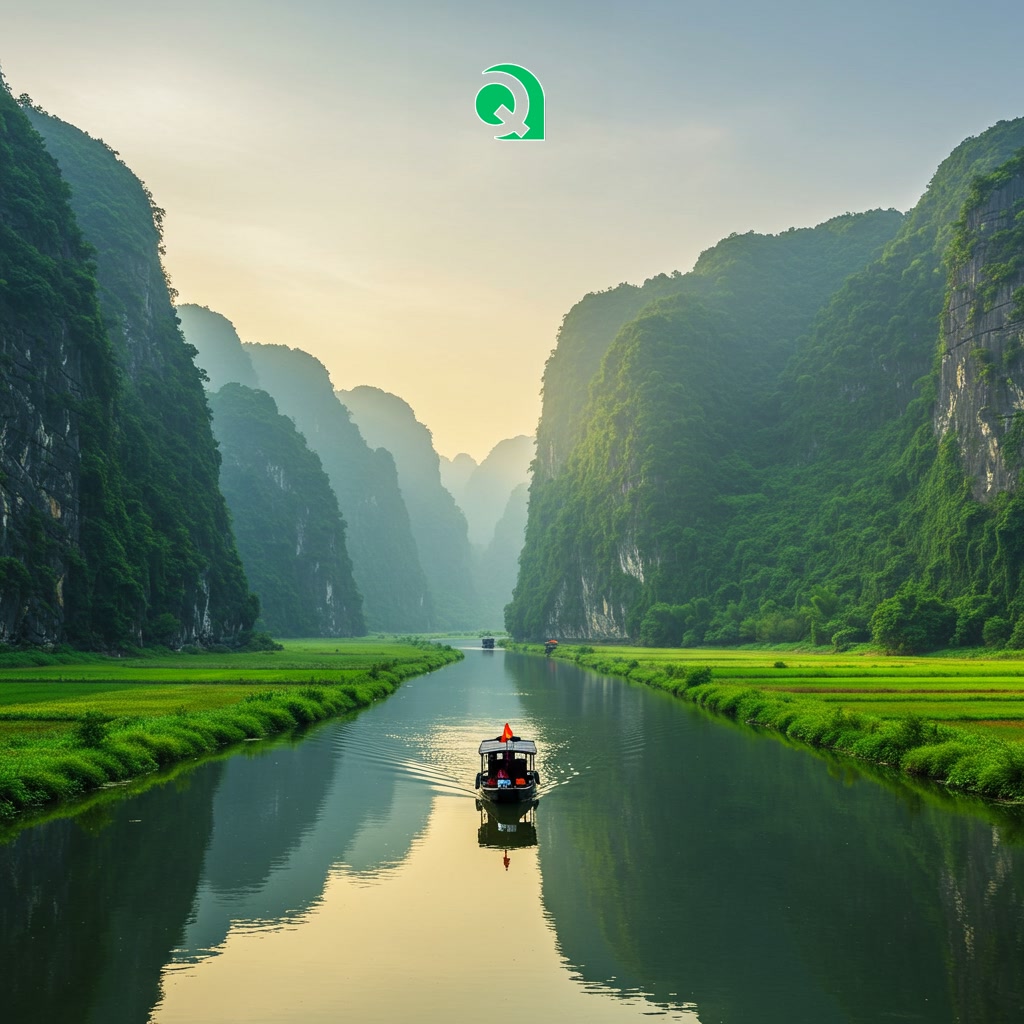
This travel guide explores the beautiful Ninh Binh region in Vietnam. It focuses on navigating the stunning natural landscapes, particularly its famous rivers and mountains. Travelers will find information on experiencing the area’s unique scenery and planning their visit to this picturesque destination. The guide aims to assist those looking to travel through Vietnam’s breathtaking karst formations and waterways.
Section 1: Why Visit Ninh Binh? Introduction to Vietnam’s Stunning Landscape
Ninh Binh, often hailed as the “Halong Bay on land,” offers a spectacular introduction to Vietnam’s diverse and stunning natural beauty. This province is defined by its dramatic landscape where majestic limestone karst mountains rise abruptly from flat plains punctuated by serene rivers and vibrant green rice fields. Visiting Ninh Binh provides a unique opportunity to immerse yourself in a tranquil environment, exploring incredible geological formations by boat or on foot. It’s a destination that perfectly showcases the harmonious blend of water and mountains, providing picturesque scenery and a peaceful escape from the bustling cities, making it an essential stop for any traveler seeking Vietnam’s breathtaking natural wonders.
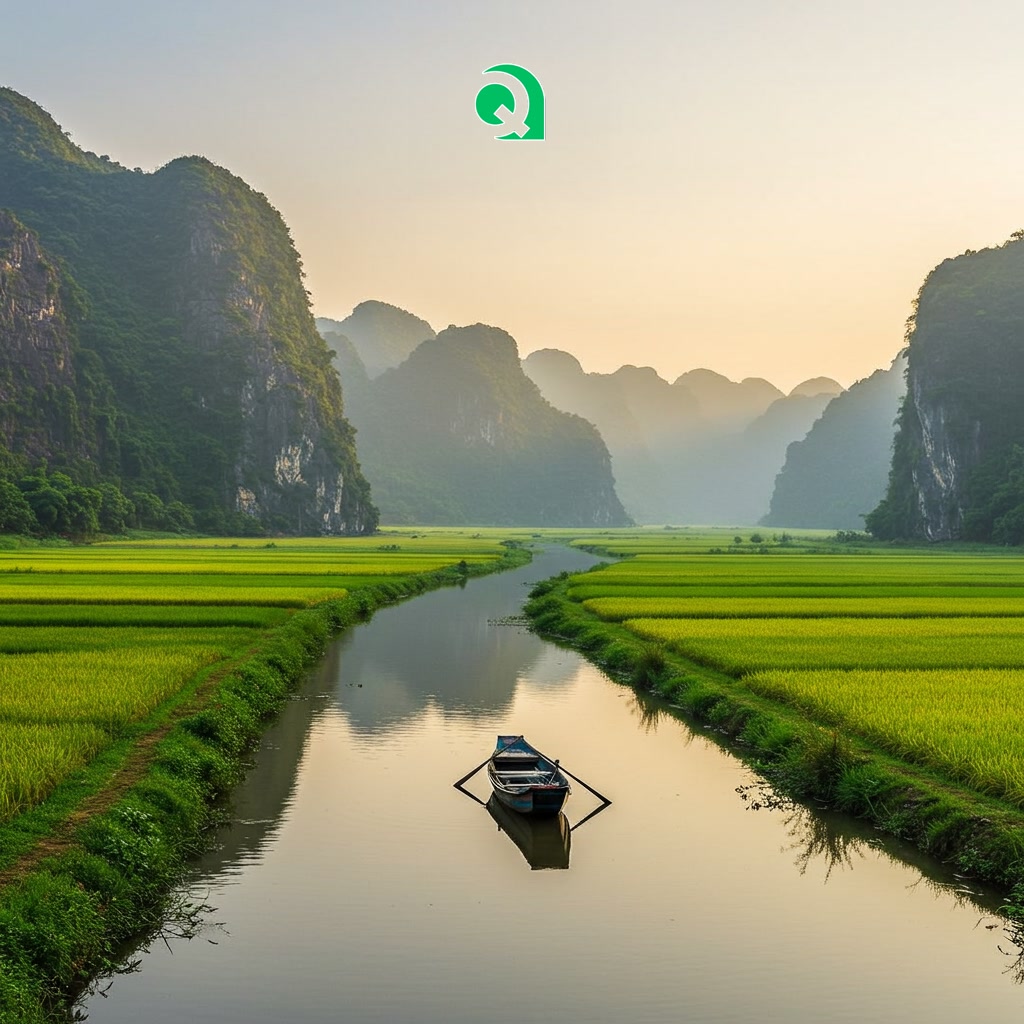
Why Visit Ninh Binh? Introduction to Vietnam’s Stunning Landscape
Section 2: Exploring Ninh Binh’s Natural Wonders: Rivers and Mountains
Ninh Binh’s defining characteristic is the spectacular interplay between its winding rivers and the dramatic limestone karst mountains. These towering formations, sculpted over millennia, rise abruptly from verdant rice paddies and calm waterways, creating a landscape often described as otherworldly. Exploring this region means navigating these natural wonders. The rivers, like the famous Ngo Dong, act as natural pathways, allowing visitors in traditional sampan boats to glide between sheer cliffs and through submerged caves. The mountains provide a breathtaking backdrop, their peaks often shrouded in mist or covered in lush tropical foliage, offering stunning panoramic views for those who venture to climb.
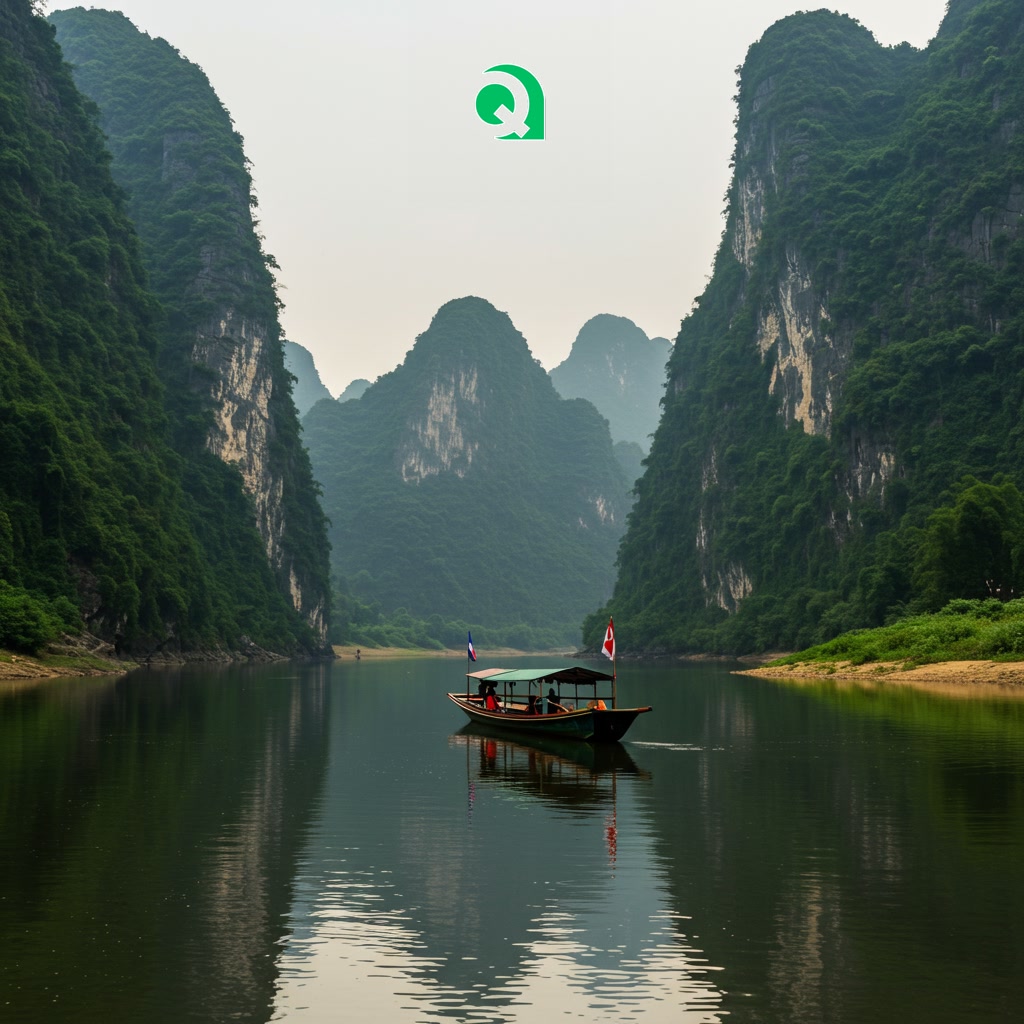
Exploring Ninh Binh’s Natural Wonders: Rivers and Mountains
Section 3: Top Attractions and Activities Beyond Nature
While Ninh Binh is undeniably renowned for its spectacular natural fusion of rivers and karst mountains, the region offers compelling attractions that delve into Vietnam’s rich history and culture. Visitors can explore Hoa Lu Ancient Capital, the site of Vietnam’s 10th and 11th-century political centre, where remnants of the past are seen in temples dedicated to former kings, providing a glimpse into the nation’s early independence. Another significant destination is the vast Bai Dinh Pagoda complex, one of the largest Buddhist sites in Southeast Asia, featuring immense statues, intricate architecture, and expansive grounds. Beyond these historical and religious landmarks, cycling through the picturesque villages offers a peaceful way to experience local life and the rural charm that complements Ninh Binh’s dramatic landscapes.
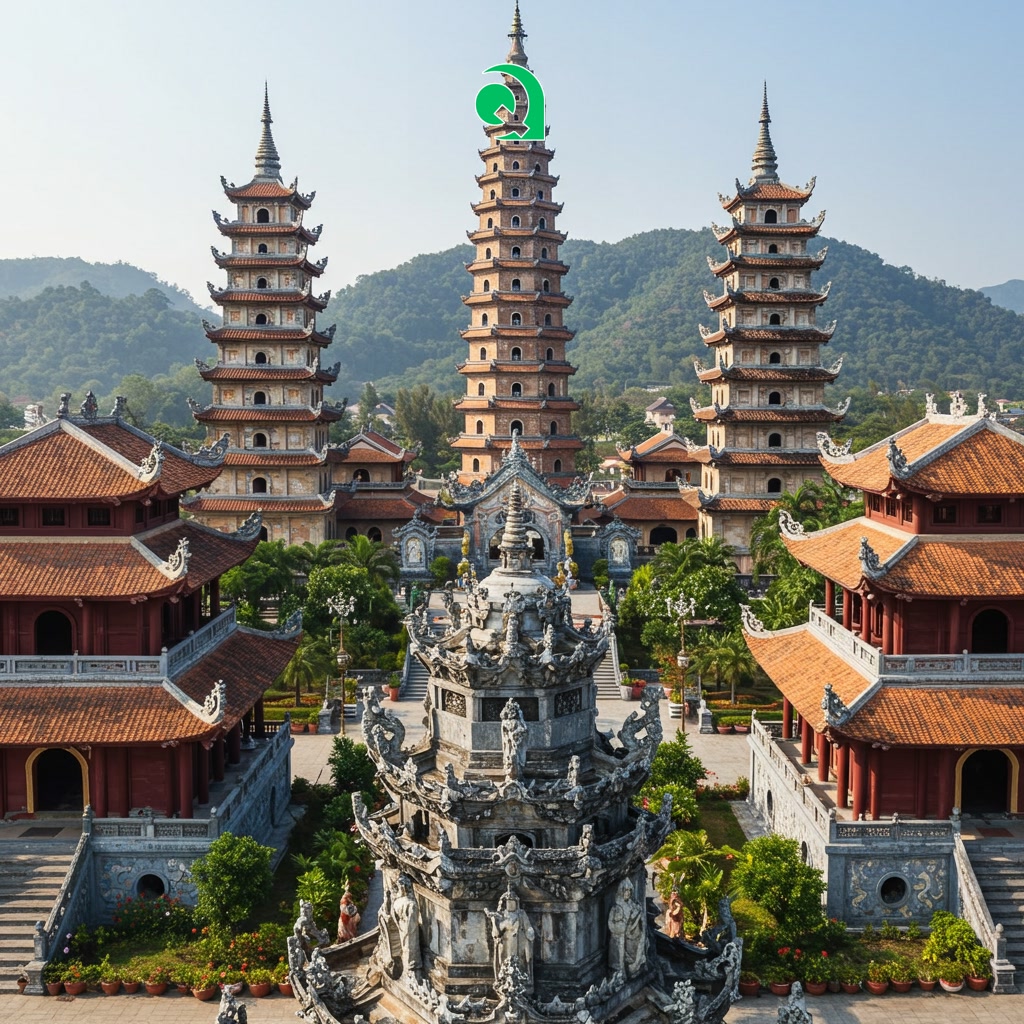
Top Attractions and Activities Beyond Nature
Section 4: Planning Your Trip: Getting to Ninh Binh & Getting Around
Transitioning from exploring Ninh Binh’s rich historical and cultural sites, planning your logistics is key to experiencing its stunning natural beauty. Getting to Ninh Binh is straightforward, primarily from Hanoi or other northern cities. The most common methods are by train, which offers scenic views and arrives directly at Ninh Binh station, or by bus, with numerous services available. Private cars or taxis are also options for convenience. Once you arrive, navigating the region’s diverse attractions is easy. Renting a motorbike or scooter is popular for independent exploration, offering flexibility to visit karst landscapes and historical relics alike. Taxis and car-with-driver services provide comfort, while bicycles are ideal for shorter distances or leisurely rides through rural areas. Understanding these transport options ensures you can efficiently access all that Ninh Binh has to offer.
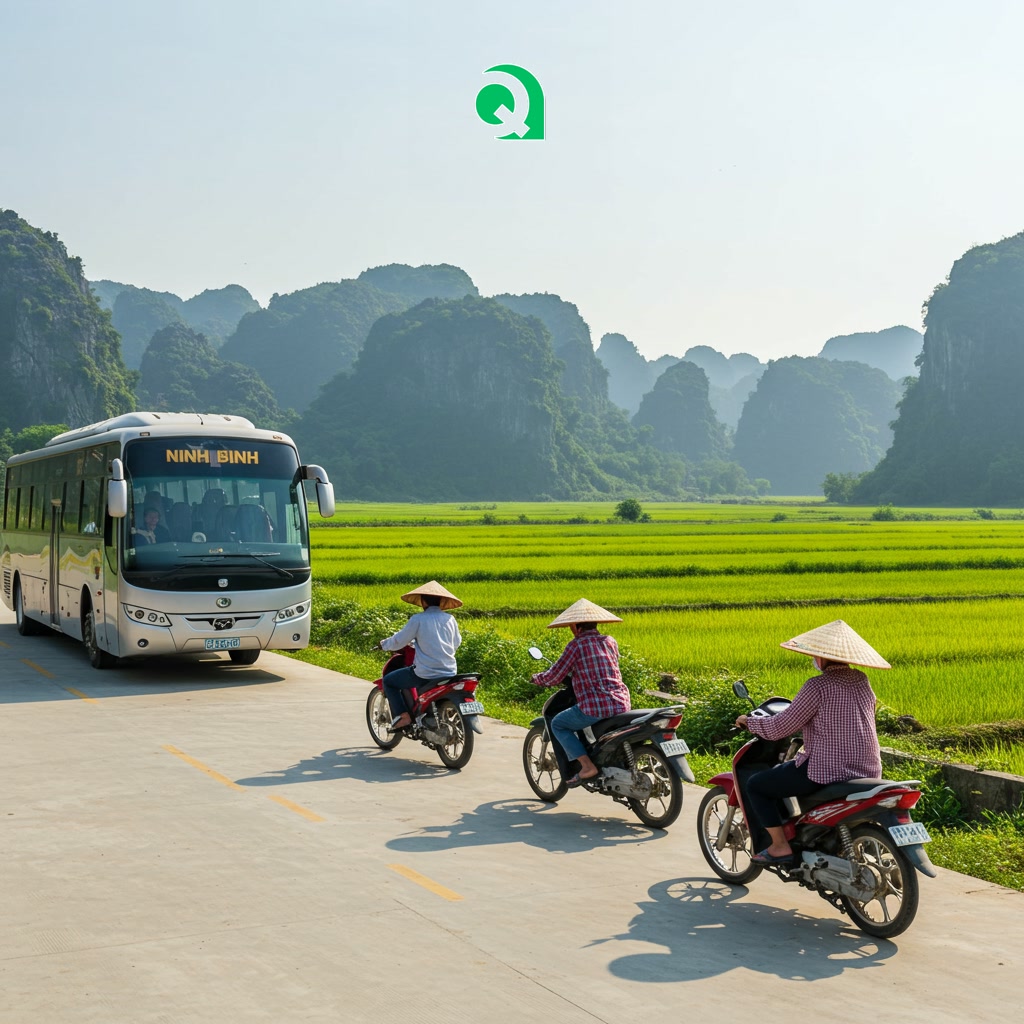
Planning Your Trip: Getting to Ninh Binh & Getting Around
Section 5: Where to Stay and Eat: Accommodation & Dining Options
Having sorted out how to reach Ninh Binh and navigate its landscapes, your next considerations will naturally be where to rest and refuel. Accommodation options in Ninh Binh cater to a range of preferences and budgets, from charming homestays nestled amongst the karst peaks, offering a truly local experience, to comfortable hotels and more luxurious resorts, often located near key attractions like Tam Coc or Trang An. When it comes to dining, Ninh Binh provides a delightful culinary journey. Don’t miss trying local specialties such as goat meat dishes (de) or burnt rice crackers (com chay). You’ll find everything from simple street food stalls and local eateries serving authentic Vietnamese flavours to more formal restaurants, ensuring you can easily find satisfying meals throughout your stay as you explore the stunning natural beauty.
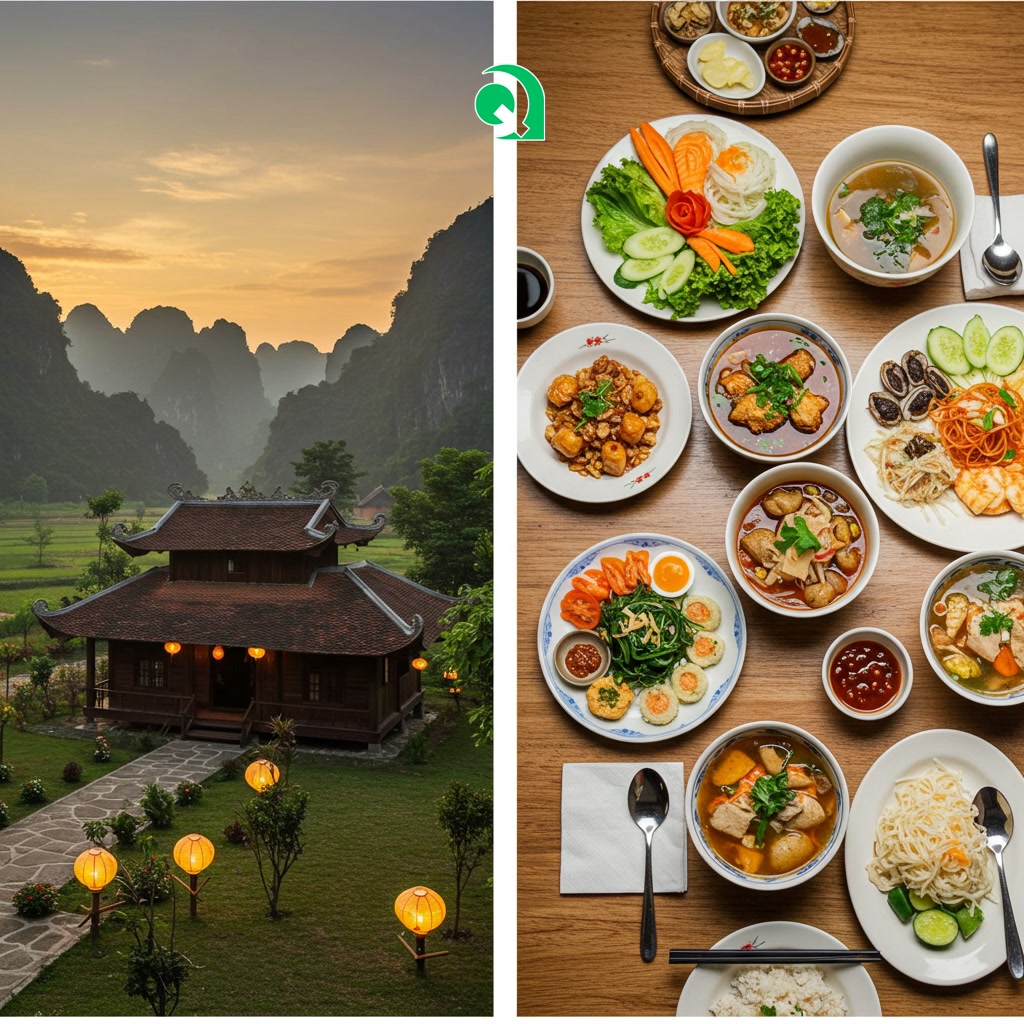
Where to Stay and Eat: Accommodation & Dining Options
Section 6: Best Time to Visit Ninh Binh and Travel Tips
Choosing the right time to visit Ninh Binh can significantly enhance your experience of its stunning landscapes. Generally, the best periods are during the dry seasons: from March to May (spring) and September to November (autumn). These months offer pleasant temperatures, less rain, and clear skies, perfect for boat trips, cycling, and hiking. The green rice paddies are most vibrant in late spring (around May) and again before harvest in September/October, offering iconic picturesque views. The summer months (June-August) can be hot and humid with occasional heavy rain, while winter (December-February) is cooler and can be grey or misty, though less crowded. Regardless of the season, practical tips include booking popular accommodations and boat tours in advance, especially during peak travel times or holidays. Always carry water, sunscreen, and insect repellent, and wear comfortable shoes suitable for exploring both wet areas and rocky paths to fully enjoy the natural beauty.
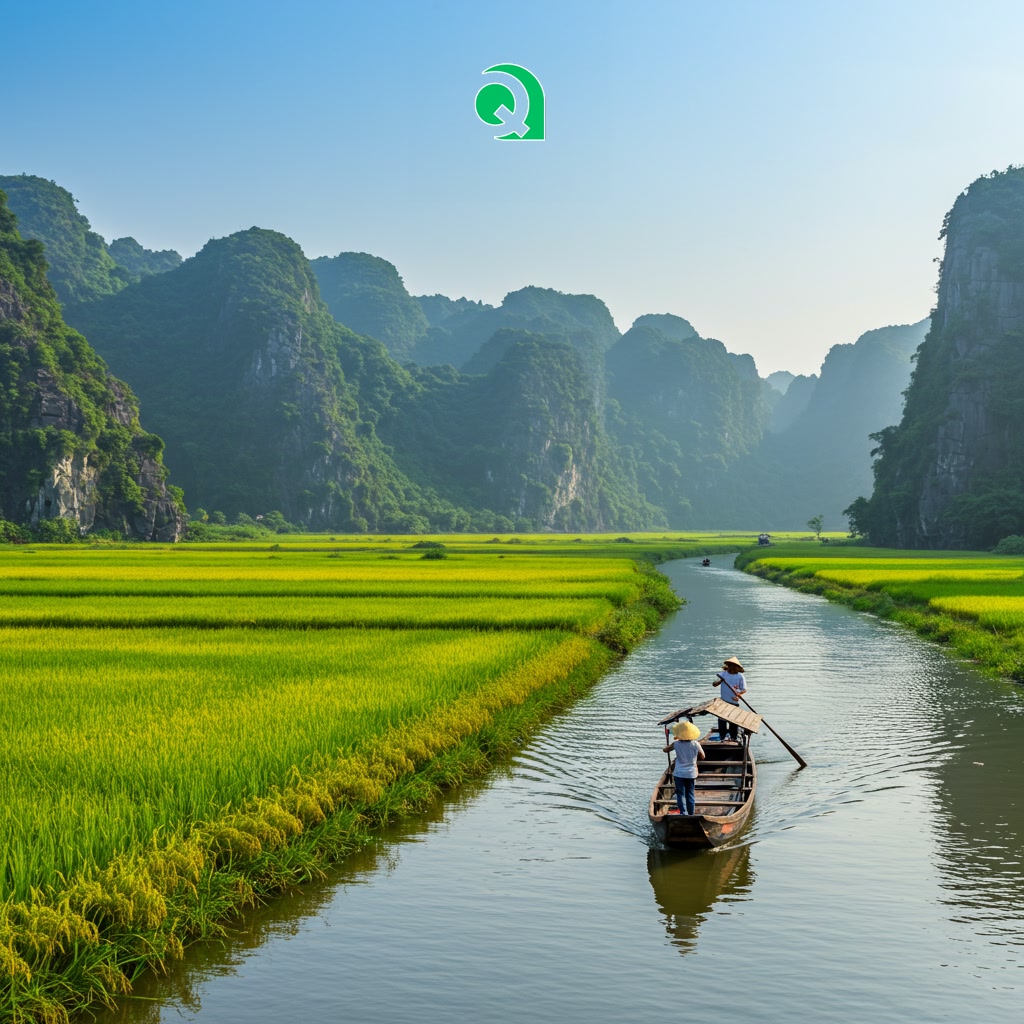
Best Time to Visit Ninh Binh and Travel Tips

